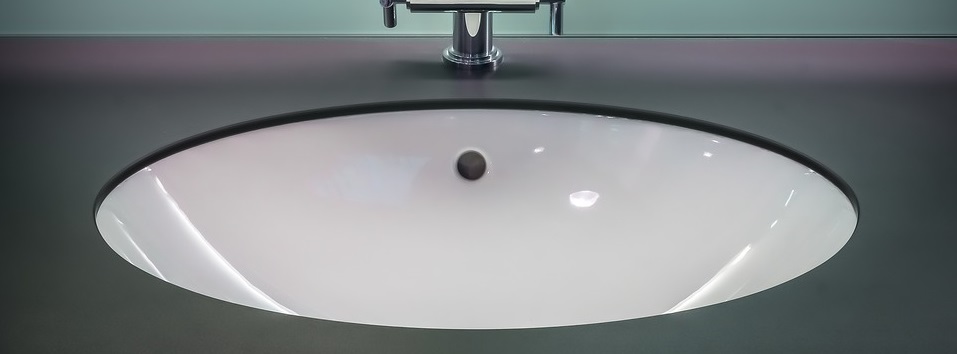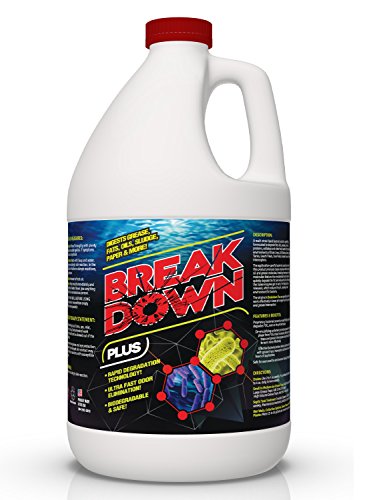Have you ever noticed a hole under the faucet in a sink before? Do you know its function? That’s an overflow hole that prevents water from spilling on the floor if the sink overflows. That is why it is important to clean a sink overflow hole to keep it draining water.

If the hole gets blocked, it won’t be able to drain excess water and your floor will get flooded. Asides that, if the sink overflow is not clean, it is likely to grow mold, especially if it is in a bathroom.
Today, we will tell you how best to clean a sink overflow and keep it working optimally.
It is also possible that the sink overflow hole might smell due to the accumulation of bacteria causing the clog. We will also tell you ways to deal with that and keep everything nice and neat.
Table of Contents
How Can I Clean a Sink Overflow?
- Insert a cleaning brush in the hole. This Alink brush is a great option. It is long and has a lot of bristles. Work it up and down the hole to loosen as much clog as possible. The bristles will also trap the materials and pull them out along with the brush.
- Stick a silicone funnel into the hole.This type is ideal as it can withstand high temperatures.
- Pour hot water into the sink overflow hole. Be careful at this point so it doesn’t splash on you. The boiling water will further release the clog and push through the build-up freeing the overflow hole.
- Repeat if needed. The clog might not completely loosen the first time you try. In that case, you might have to go over this process a couple more times to have it drain properly again.
How Can I Get Rid of the Smell From my Sink Overflow?
Different reasons can cause your sink overflow hole to smell. If you have a smelly sink, the following methods will help you get rid of the smell in your sink overflow hole:
- Pour baking soda and vinegar into the hole
- Pour an enzyme cleaner into the hole
How to Use baking soda and vinegar to Clean a Sink Overflow
The two ingredients commonly found in homes can make a cleaning agent for sink overflow holes. Just follow the process below to get it done.
- Pour baking soda down the hole. With the help of a funnel, pour one cup of baking soda into the sink overflow hole.
- Pour some white vinegar into the hole too. You can try this Natural Armor. It is rated 6x stronger than regular ones and is ecofriendly. Once you pour it, it will fizz in reaction with the baking soda. This effect will loosen and deodorize the overflow hole.
- Let it sit for a while. Leave it in and let it do its things for about 15 minutes.
- Pour in boiling water. After the time has passed, pour some hot water into the overflow hole to flush everything out. The heat will also kill most of the remaining bacteria.
- Repeat as needed. If some smell still lingers, you will have to repeat the process. Depending on how strong it is, you might need 2 more iterations.
- Enzymatic formula for severe messes
- Discourages re-soiling by removing the odor of the toughest messes
- Fast-drying
- For use on carpets, hard floors, furniture, clothing and more
- Light fresh scent
- age range description: Adult
- included components: PHL309579
How to Use an enzyme cleaner to clean a sink overflow
Enzyme cleaners are also great to clean a sink overflow hole. They eat through organic bacteria like monsters. Some of them are even fortified with odor neutralizers like this Angry Orange.
Enzyme cleaners often come in liquid and powder forms. The powder will need to be mixed with water first or you first pour it in the drain then flow some water through.
Whichever type you go for, you can rest assured you will get results. All you have to do is pour the enzyme cleaner into the sink overflow hole and let it sit overnight.
The next morning, you can pour in some warm water to flush it all out. In most cases, enzyme cleaners properly deal with both dirt and smell. So, you likely won’t need more than one iteration.
There you go, easy ways to clean a sink overflow. In most cases, these methods too will work for your drains too. So, feel free to apply them as needed. If you found this information useful, chances are your loved ones will too. Why not share it with them? They will love you for it.
That’s it from us today. If you want more useful tips and reviews, you can explore our site. Questions? Hit us up in the comments. We’ll be happy to help. Thank you for your time.
How to Clean a Sink Overflow — FAQs
Why does my sink overflow smell?
When you notice a smell coming from your sink, it’s either from the drain or the sink hole. If you find out it’s from the sink hole, there’s a clog of gunk and a kingdom of bacteria in there. Fortunately, the smell from your sink overflow is easy to get rid of with things you probably already have in your home. Here’s how to go about it:
- Pour 1/4 cup of baking soda into the sink overflow.
- Pour 1/2 cup of vinegar in there too.
- Leave for 20 minutes so they can perform their dissolving and deodorizing magic.
- Afterward, pour a bowl of hot water to flush everything off.
Is it true Coke can unclog drains?
If you have a clogged drain and the usual household products that can solve the issue aren’t available, the bottle of Coke in your refrigerator can suffice. Get 2 liters of Coke and let it stay till it gets to room temperature. As you pour it down the drain, it fizzes as expected and starts to break down the clog because of the phosphoric acid in it. Leave it for an hour. Afterwards, run hot water down the drain to clear it up.
Can toothpaste clog my drain?
Toothpaste, makeup, shaving cream, hair gel, etc. line up the sides of your drain pipe and if that continues, they’ll build up and end up clogging your drain. Since the bacteria in your septic tank is not present to break them down, bad bacteria starts to grow and feed off them and also cause an odor. This is why it is best practice to use an enzyme cleaner to maintain your drain once in a while.
What is the best type of drain cleaner I can use?
There are many commercial drain cleaners available. The best type you can use to clean your drain are the ones that will replenish the good bacteria in your septic tank and won’t damage your pipes. An enzyme drain cleaner is a great example; as you pour it down your drain, it’ll break down the stuck-on dirt on the inside of your pipes and flush them into the tank. The chemical drain cleaners, even though they can be effective, are not good for your pipes not your septic tank.
To get this enzyme drain cleaner, click here
Is it safe to let drain cleaner sit overnight?
It is best let a drain cleaner sit for the duration the manufacturer instructs. However, if you’re using and enzyme drain cleaner and you have a tough clog buildup, you can let it seat overnight and your plumbing will be safe.
Can I use bleach to unclog a drain?
Up to 3/4 a cup of bleach poured into your drain and following it up with hot water can kill the germs an bacteria in there and deodorize your drain. However, it won’t unclog it. It doesn’t have any active ingredients that can eat through the clog blocking your drain. You can either use baking soda and vinegar or an enzyme cleaner.


